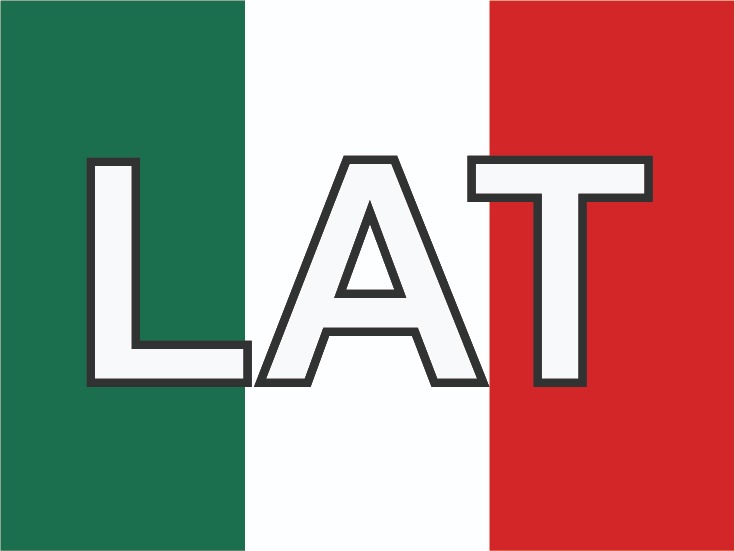NAT2 gene polymorphisms in three indigenous groups in the Colombian Caribbean Coast region
Abstract
Objective:To study the NAT2 gene polymorphisms 481T, 590A and 857A in the Chimila, Wiwa and Wayuu indigenous groups of the Colombian Caribbean to determine the frequencies of the allelesNAT2*4, NAT2*5, NAT2*6, and NAT2*7 and to determine the types of acetylators present in these populations.
Methods:A total of 202 subjects were studied: 47 Chimila, 55 Wiwa, and 100 Wayuu. The polymorphisms were idenjpgied using a real-time PCR method for allelic discrimination designed using Taqman of Applied Biosystems.
Results:The following alleles were found at the highest frequency in the following groups: the NAT2*4 allele (wild type) in the Wayuu group (55.3%), the NAT2*5 allele in the Wiwa group (34.5%), and the NAT2*7 allele in the Chimila group (24.2%). A higher frequency of the rapid acetylator status was found in the Wayuu group (31.3%) and Chimila group (29.5%) compared with the Wiwa group (12.7%). The intermediate acetylator status distribution was very similar in all three groups, and the frequency of the slow acetylator status was higher in the Wiwa group (32.7%) compared with the Chimila and Wayuu groups (20.5% and 21.2%, respectively).
Conclusion:The results demonstrated the allelic distribution and pharmacogenetic differences of the three groups studied and revealed the most frequent acetylator status and phenotype. Because of the high prevalence of slow acetylators, a greater incidence of tuberculosis (TB) drug-induced hepatotoxicity is predicted in these populations, with a higher frequency in the Wiwa group.
Authors
Downloads
Keywords
- NAT2
- single nucleotide polymorphism
- genotyping
- acetylation
- Isoniazid
- Chimila
- Wiwa
- Wayuu
- Indigenous groups
References
Fuselli S, Gilman RH, Chanock SJ, Bonatto SL, De Stefano G, Evans CA, et al. Analysis of nucleotide diversity of NAT2 coding region reveals homogeneity across native American populations and high intra-population diversity. Pharmacogenomics J. 2007; 7: 144–52.
Walraven JM, Zang Y, Trent JO, Hein DW. Structure/function evaluations of single nucleotide polymorphisms in human N-acetyltransferase 2. Curr Drug Metab. 2008; 9(6): 471–86.
Dupret JM, Rodríguez-Lima F. Structure and Regulation of the Drug-Metabolizing Enzymes Arylamine N-Acetyltransferases. Curr Med Chem. 2005; 12(3): 311–8.
Butcher NJ, Boukouvala S, Sim E, Minchin RF. Pharmacogenetics of the arylamine N-acetyltransferases. Pharmacogenomics J. 2002; 2(1): 30–42.
Walker K, Ginsberg G, Hattis D, Johns DO, Guyton KZ, Sonawane B. Genetic polymorphism in N-acetyltransferase (NAT): Population distribution of NAT1 and NAT2 activity. J Toxicol Environ Health B Crit Rev. 2009; 12(5-6): 440–72.
Doll MA, Fretland AJ, Deitz AC, Hein DW. Determination of human NAT2 acetylator genotype by restriction fragment-length polymorphism and allele-specific amplification. Anal Biochem. 1995; 231(2): 413–20.
Human NAT2 Alleles (Haplotypes). Database of arylamine N-Acetyltransferases (NATs). Accessed: November 14 2013. Available from: http://nat.mbg.duth.gr/Human%20NAT2%20alleles_2013.htm.
García-Martín E. Interethnic and intraethnic variability of NAT2 single nucleotide polymorphisms. Curr Drug Metab. 2008; 9(6): 487–97.
Boukouvala S, Fakis G. Arylamine N-acetyltransferases: What we learn from genes and genomes. Drug Metab Rev. 2005; 37(3): 511–64.
Bailliet G, Santos MR, Alfaro EL, Dipierri JE, Demarchi DA, Carnese FR, et al. Allele and genotype frequencies of metabolic genes in native Americans from Argentina and Paraguay. Mutat Res. 2007; 627: 171–7.
Jorge-Nebert LF, Eichelbaum M, Griese EU, Inaba T, Arias T. D. Analysis of six SNPs of NAT2 in Ngawbe and Embera Amerindians of Panama and determination of the Embera acetylation phenotype using caffeine. Pharmacogenetics. 2002; 12(1): 39–48.
Talbot J, Magno LA, Santana CV, Sousa SM, Melo PR, Correa RX, et al. Interethnic diversity of NAT2 polymorphisms in Brazilian admixed populations. BMC Genet. 2010; 11: 87.
Consejeria Presidencial para los derechos Humanos. Diagnóstico de la situación del pueblo indígena Chimila-Ette Ennaka. Accessed: November 14 2013. Available from: http://www.derechoshumanos.gov.co/Observatorio/documents/2010/DiagnosticoIndigenas/Diagnostico_CHIMILA.pdf.
Uribe TCA. Introducción a la Colombia Amerindia-Chimila. Instituto Colombiano de Antropología; Bogotá: 1987. Accessed: November 14 2013. Available from: http://www.banrepcultural.org/blaavirtual/antropologia/amerindi/chimila.htm.
ACNUR. Descripción general de los pueblos Indígenas de Colombia. Accessed: February 24 2013. Available from: http://www.acnur.org/biblioteca/pdf/4435.pdf?view=1. 298-397. ONU.
UNHCR, ACNUR. Comunidades indígenas. Accessed: February 24 2013. Available from: http://www.acnur.org/t3/fileadmin/Documentos/Pueblos_indigenas/2011/Comunidades_indigenas_en_Colombia_-_ACNUR_2011.pdf?view=1. ONU.
Consejeria Presidencial para los derechos Humanos. Diagnóstico de la situación del pueblo indígena Wiwa. Accessed: November 14 2013. Available from: http://www.derechoshumanos.gov.co/Observatorio/documents/2010/DiagnosticoIndigenas/Diagnostico_WIWA.pdf.
Consejeria Presidencial para los derechos Humanos. Diagnóstico de la situación del pueblo indígena Wayuu. Accessed: November 14 2013. Available from: http://www.derechoshumanos.gov.co/Observatorio/documents/2010/DiagnosticoIndigenas/Diagnostico_WAY%C3%9AU.pdf.
Life Technologies. SNP genotyping analysis using TaqMan(r) assays. Accessed: February 8 2011. Available from: http://www.lifetechnologies.com/co/en/home/life-science/pcr/real-time-pcr/real-time-pcr-assays/snp-genotyping-taqman-assays.html.
Torkaman-Boutorabi A, Hoormand M, Naghdi N, Bakhshayesh M, Milanian I. Genotype and allele frequencies of N-acetyltransferase 2 and glutathione S-transferase in the Iranian population. Clin Exp Pharmacol Physiol. 2007; 34: 1207–11.
Hamdy SI, Hiratsuka M, Narahara K, Endo N, El-Enany M, Moursi N, et al. Genotype and allele frequencies of TPMT, NAT2, GST, SULT1A1 and MDR-1 in the Egyptian population. Br J Clin Pharmacol. 2003; 55: 560–9.
Kubota R, Ohno M, Hasunuma T, Iijima H, Azuma J. Dose-escalation study of isoniazid in healthy volunteers with the rapid acetylator genotype of arylamine N-acetyltransferase 2. Eur J Clin Pharmacol. 2007; 63: 927–33.
Hiratsuka M, Kishikawa Y, Takekuma Y, Matsuura M, Narahara K, Inoue T, et al. Genotyping of N-acetyltransferase2 polymorphism in the prediction of adverse drugs reactions to isoniazid in Japanese patients. Drug Metab Pharmacokinet. 2002; 17(4): 357–62.
Chen B, Cai W, Li J, Cao X. Estimating N-acetyltransferase metabolic activity and pharmacokinetic parameters of isoniazid from genotypes in Chinese subjects. Clin Chim Acta. 2009; 405: 23–9.
The copy rights of the articles published in Colombia Médica belong to the Universidad del Valle. The contents of the articles that appear in the Journal are exclusively the responsibility of the authors and do not necessarily reflect the opinions of the Editorial Committee of the Journal. It is allowed to reproduce the material published in Colombia Médica without prior authorization for non-commercial use




















